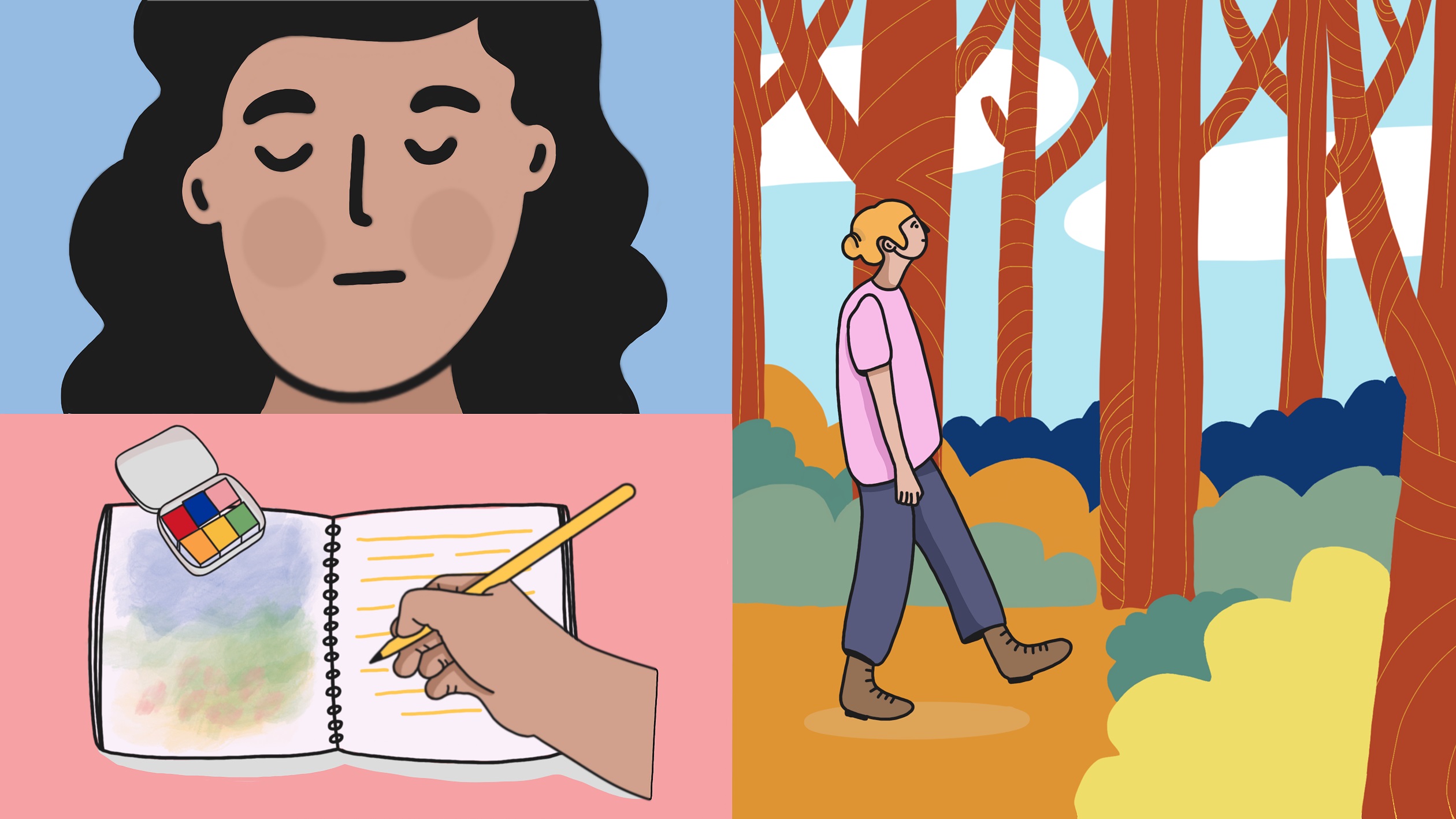Mindfulness for youth workers. What’s it all about?
by Eleni Michail
02/12/2021
Get ready for an “out of the comfort zone” article
Youth work is interwoven with experiential learning. Similar to the activities we offer to learners, this article might bring you out of the comfort zone. It might include information or practices that you have never encountered before and thus surprise you, or awaken emotions inside of you. I advise you to stay with these emotions. Just like how Jalaluddin Rumi writes in his poem “The guest house”: “Be grateful for whoever comes, because each has been sent as a guide from beyond.” So yes, stay with what will arise, hold it and observe it, and be curious and learn from it. This is actually mindfulness in practice. In the end, it might be that “Out of the comfort zone is where the magic happens” (a phrase which crops up in memes all over the place) or it might not.
A perspective and an invitation
In any case, please know that what I am offering here is just a perspective and an invitation. It is definitely not the absolute truth carved in stone, but it is shared with love and with the intention to inspire you and support you in your daily life as a youth worker. Take from it whatever you feel will serve you as a human being and as a professional. Thank you in advance for investing your time in this little corner of the Coyote magazine.
Defining mindfulness
Let’s dive into the topic by introducing a definition of mindfulness that has much agreement.
Mindfulness is the skill of being in the present moment.
Let’s pause here for a second and let this sink into us. In fact, let’s read this phrase once more.
…Mindfulness is the skill of being in the present moment...
In my humble opinion, the word “being” from the above sentence is a key word for youth workers. In a youth work sector which is sometimes or (many times) filled with “doing”, “to do” lists, dead-lines and plan-ning, we might forget how to be, how to pause and observe and “plant” ourselves again in the world.
Mindfulness is about being open to the now and living fully the current experiences. The opposite of mindfulness is the wandering mind, the situation in which our mind disconnects from the body and embarks on its own journey without any awareness of this journey. It is very common to have a wandering mind. In his study of 2010, Matt Killingsworth found that “on average, respondents reported that their minds were wandering 46.9 percent of time”. If we agree on this, one could say that we are absent from almost half of our life.
Yet no! Here we are, thinking how to really live all our life through mindfulness!
There are numerous definitions of mindfulness (you can read many of them here https://positivepsychology.com/what-is-mindfulness/) but I would break the definition down into these three elements. Mindfulness is about:
- maintaining a momentby-moment awareness of what is happening inside of oneself;
- maintaining a momentby-moment awareness of what is happening around oneself;
- without judging or blaming what is happening inside or around.
I consider the above as the three integral elements of mindfulness. One cannot constitute mindfulness on its own, they are all interconnected.
The first element (being aware of what is happening inside of oneself) really invites us to pay attention to all the dimensions of ourselves (physical, emotional, mental, spiritual).
- How is my body? What parts are stiff or aching or relaxed?
- What emotions nest in me? How do I feel?
- What thoughts cross my mind? What are my thinking patterns?
- Who am I really? Where am I going in life? What am I here to serve?
The second element (being aware of what is happening around oneself) supports us to get out of our inner world and see our connection with the surroundings. In a way, it asks us to understand how we interact with the people around us, the society, the nature, the earth, the mystery.
And the last element (Oh, I love this last piece!) reminds us to assess what is happening inside and outside without criticising or self-blaming but with acting in maturity and responsibility. It is about endorsing both the yin (receptive) and the yang (active) principles: on one hand accepting what is the case and at the same time it is about taking the responsibility of it. This dimension confronts us with questions such as “Now that I am aware of what is happening, what is the best way to respond to it, with my words, my actions and my approach?”
In the mindfulness classes that I offer, I usually ask the participants which dimension is the hardest for them. Which one is the most challenging for you? That one, is the one that you need to work on the most.
Is mindfulness a new “fruit”?
Some people believe that mindfulness is a new invention, but it is not. The concept of mindfulness, just like all these new-age super foods that we are introduced to (kale and goji berries, hippophae and quinoa), has been here for ages. I witness my 90-year old grandmother who has barely received any formal education embodying gracefully the definition of mindfulness (being comfortable with silence, practising self-reflection, being nurturing towards herself and the beings around her, listening deeply, acting from her core). That’s because mindfulness is a skill that many traditions have been practising over time, for example through silence and meditation, mono-tasking and focused work, ceremonies of joy and grief and primarily by embracing the natural cycles. What has happened recently is that mindfulness has become a scientific field and therefore research offers evidence on the benefits and reinforces further the practices (see resources section for further reading).
We are all born mindful
Now, from the image of my old grandma, I will bring you to the image of a baby or a child. What is its relation to the present moment? Little children mesmerise me, because I believe that they are always grounded in the present moment. They are always immersed in what they do. Although they might not yet be capable of naming their emotions or needs, they know how to track them and baldly express them (through voice and crying) and make sure they are addressed. Little children would not criticise themselves or others and would authentically show who they are. Don’t you think? I think that all children are born mindful.
If you agree with the above statement, then you have been mindful too, at least during your very early years. We lose the skill of mindfulness as we grow up in a society with norms that one way or another want to frame and tame us. Think of a little tree in the wilderness. It would grow in all directions owning its unique shape and character. But a little tree growing in the city, will be given a shape that suits the norm. The key here is to acknowledge that we have been mindful. This is an innate resource and now it is our responsibility to reawaken and feed from it.
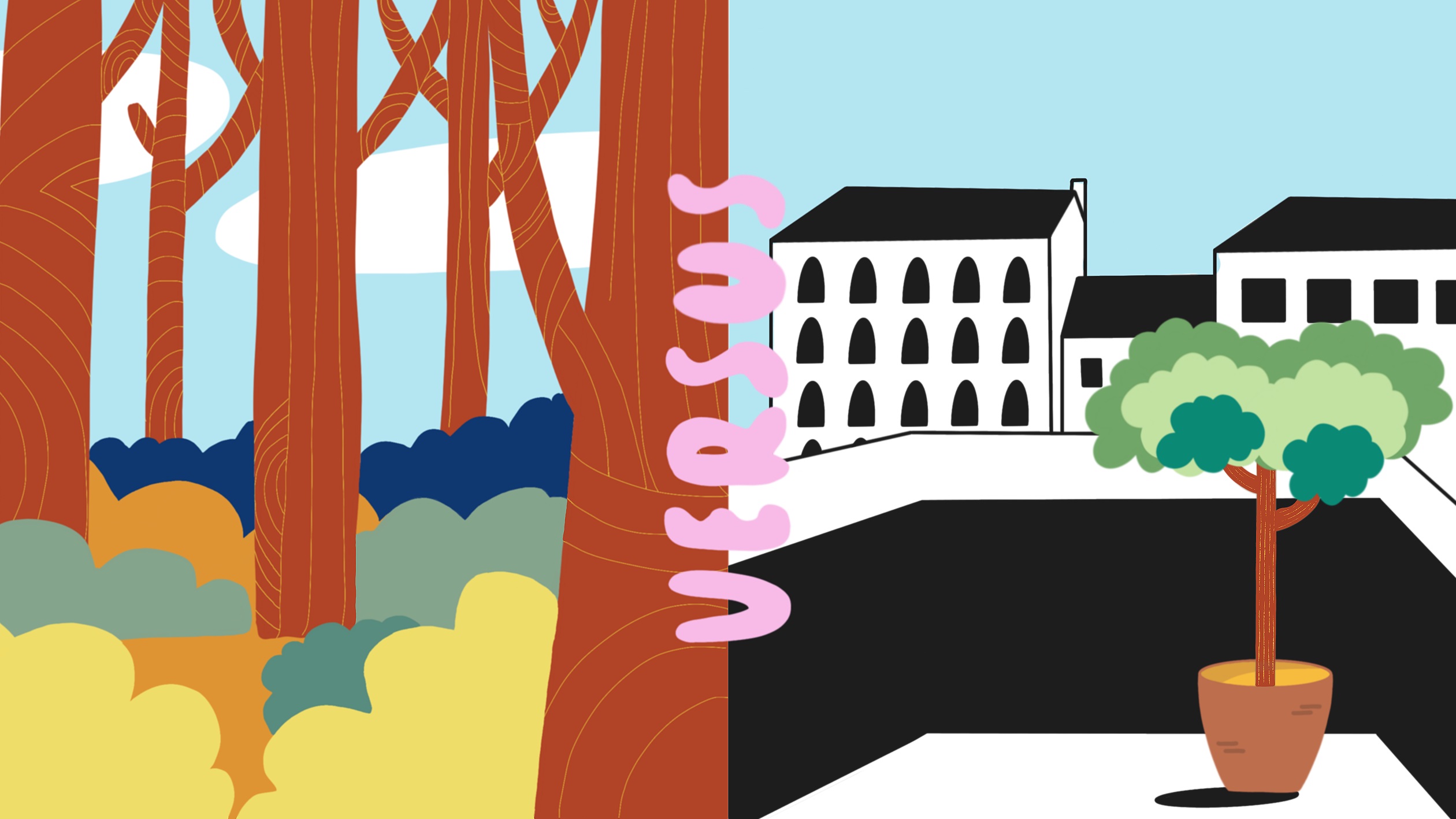
 What mindfulness is not
What mindfulness is not
It is true there are many misunderstandings or misinterpretations of mindfulness. Here we will explore some:
The airy-fairy state
Some people believe they tune into mindfulness when they are in a constant joy or uplifted mood. Yet life includes both pleasant and unpleasant events and emotions. One cannot only savour a part of them. (Caution! On purpose here I am not naming them as “negative emotions”. We learnt to judge emotions as positive or negative, but in reality every emotion has its purpose and serves us in a different way, although some emotions are indeed hard to hold). So yes, life is diverse and rich in experiences and emotions. The eternal airy-fairy state is a sort of escapism from the reality. Bill Plotkin in his book Wild mind mentions that “With their fear of falling, escapists prefer to ‘fly above’ difficult emotions, relationship and responsibilities and the demands of life.” So, mindfulness is not about neglecting the painful events or emotions but about embracing all of them, making room for all of them. It is not about detaching from the painful but living them, learning from and addressing them.
The surrendering
At the same time, mindfulness is not about surrendering or submitting ourselves to the challenges in life, feeling helpless or making ourselves small. Oh yes, that’s another great misconception! We often fall into the comfortable trap of complaining or whining about what we face, the adversities in our daily youth work, the lack of personal time and so on. It sounds odd but it is more comfortable to play the victim, to complain and whine about things than actually take the responsibility for pursuing them. Mindfulness reminds us to grow, to acknowledge the challenge without losing ourselves in it in the long run. Mindfulness invites us to take our share of responsibility towards ourselves and others.
Well-being and balance in the youth worker’s life
Working with young people is a deeply valuable as well as very demanding work. The needs of young people, their behaviours, their interests, keep changing over time and we need to stretch and adapt and address them in the best possible way. Clearly, the pandemic has made the work of some of us even more challenging or stressful. In the midst of doing the best we can for the young generation, it is important to maintain our own well-being and balance in life. In this regard, mindfulness offers a great way to contribute to the youth worker’s well-being.
The second finding from Killingsworth and Gilbert’s study (2010), which I mentioned earlier, surprises me by connecting mindfulness with happiness. According to the study, people are happier if they stay in the moment than if they mind-wander. In fact, people are happier if they are mindful of the hardships of life, than if they mind-wander on pleasant thoughts. Wow! This is – to me – a jaw-dropping finding and a great key in our pocket. If we, as youth workers, choose to be mindful of the challenges of our work, then, there is a chance we will feel happier.
Many more studies, outlined for example in the chapter “Mindfulness and well-being” by Jazaieri and Shapiro (2017), find mindfulness especially effective for reducing stress, increasing the feeling of relaxation and making people feel more satisfied with their lives. So, cultivating the skill of mindfulness could be a great tool to maintain balance as a youth worker.
Youth workers are also humans
Very often I observe youth workers who burn out or collapse because they exhaust their own resources (physical, mental, emotional, financial, time resources, etc.) to serve the youth sector. In a way, they “sacrifice” for “saving” the youth. (I need to be honest and say that I have found myself there a couple of times.) It seems that sometimes we might reach far beyond our capacities to support others, but at the same time we might fail to support ourselves.
No, I am not saying that we should be frugal or bureaucrats and go by the book. I believe it’s beautiful, and truly hopeful, that so many youth workers want to offer to the young generations. I am simply saying that we need to offer within our capacities and remember to give to ourselves as much as we give to youth work.
Imagine this. You are in an aeroplane with a child travelling to a certain destination. All of a sudden, an emergency happens and the oxygen masks drop. Who would be the first person on whom you put the mask? Perhaps at the back of your head you remember the instructions of the flight attendant: “Put the oxygen mask first on you, then put it on the people around you.” Otherwise, there is a risk you will not be able to further support this child.
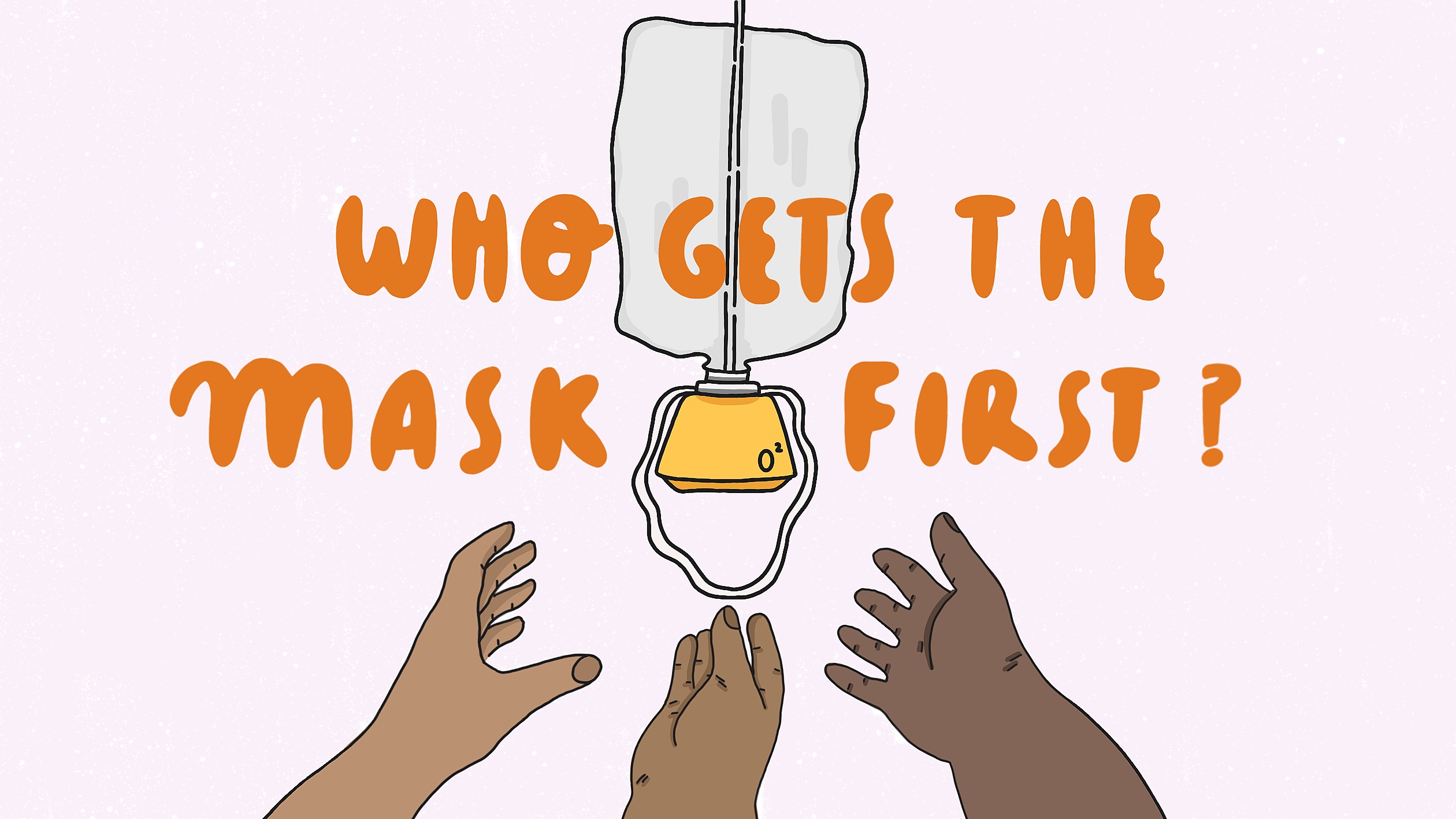
The practice of mindfulness reminds us to put the oxygen mask on ourselves first and then on youth. It invites us to stop for a while, count our resources, our capacities, our capabilities and invest them in youth work wisely. It also reminds us that we ourselves are humans with needs, and that we are responsible to give care and nurturance to ourselves, as much as we give to others. In fact, mindfulness provokes us to first feed ourselves, before we feed others.
The shift of consciousness
We live in times of environmental, social and existential crisis. Worldwide, things are not just hard, but they are becoming more and more edgy. The natural resources are being exhausted, the social problems are maximising, individuals are forgetting how to be mature humans who lead meaningful lives. In moments when I think of these, I am reminded of the words of the writer D. H. Lawrence. All humans have “little needs and deeper needs. We’ve fallen into the mistake of living from our little needs till we have lost our deeper needs in a sort of madness.”
It’s now the moment, as a global community, to turn into our deeper needs. It’s time to find again the connection with ourselves, the other humans, the planet, the mystery. This crisis embeds not only a challenge, but also an opportunity. Author Joanna Macy (you can find more about her here: www.joannamacy.net/main) speaks about “The great turning”, a shift from an industrial growth society to a life-sustaining civilization. She suggests three ways of doing the “great turning” and one of them is the shift of consciousness.
I believe that this is our role as youth workers: to support the shift of consciousness of youth, to empower them to separate their little needs from their deeper needs and to transit into mature, authentic, responsible, life-enhancing adults.
By using mindfulness in our youth work practice, not only will we be supporting the well-being of youth, but we will be able to empower them to differentiate their little needs from their deeper needs, to acquire a bigger perspective on life and the world, to understand what is truly important and to grow in such a way that serves the community and earth itself.
 Practices for cultivating mindfulness
Practices for cultivating mindfulness
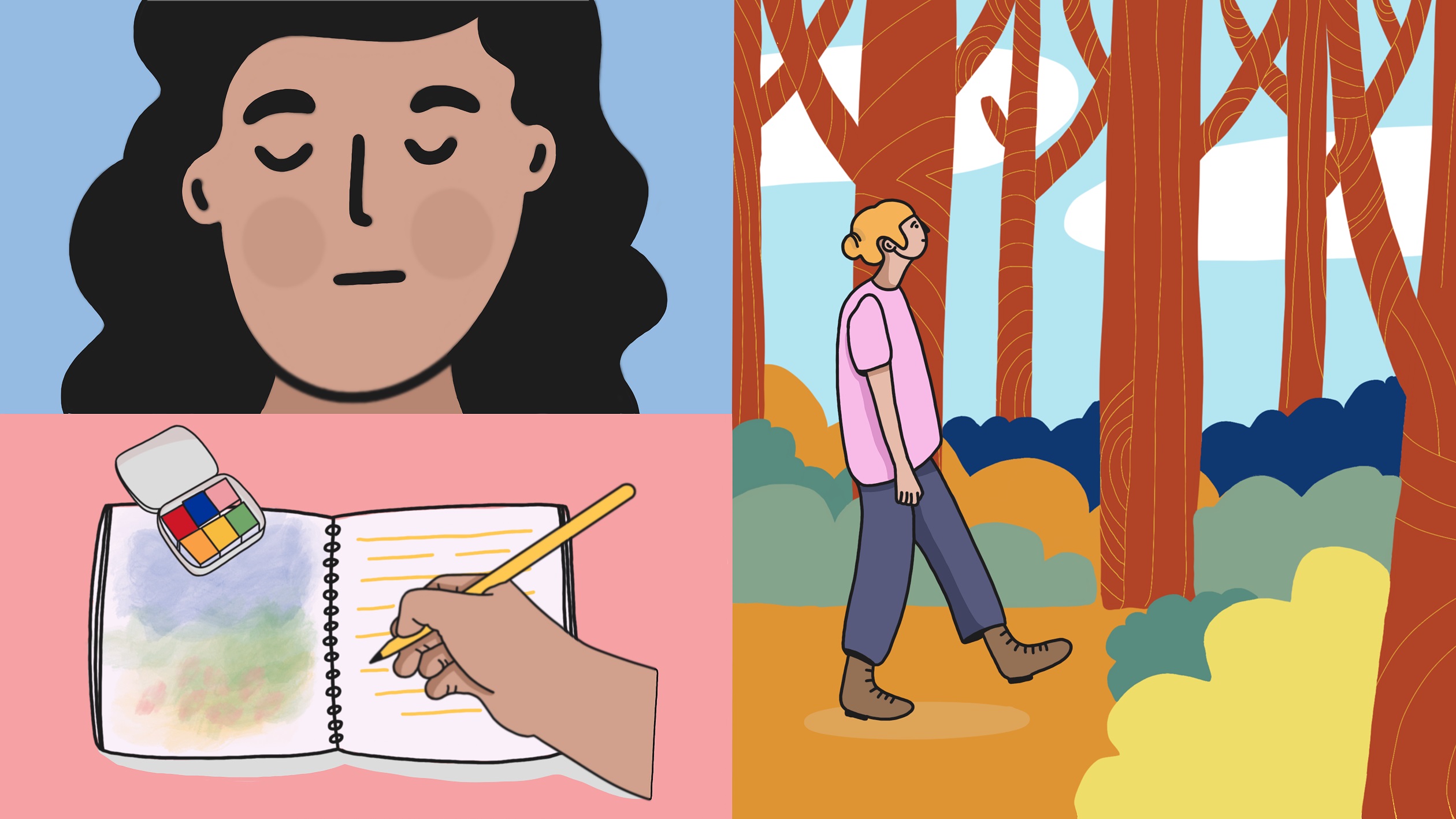
A daily moment of silence
A daily moment of silence is a little pause in the day, during which we spend time with ourselves doing… nothing! It is not a moment we spend scrolling down in social media, nor the time we take a shower. It is rather a moment in which we stop and dedicate time to ourselves. My invitation is to start small but with consistency, just like a daily ritual. Find a place to sit or lie down, close your eyes and choose to be in stillness. Begin with a minute of silence at a specific time (for example in the morning before starting your work with youth, in the evening before going to bed, or after lunch break). In that moment be with yourself, hold yourself. You may observe what is happening inside or outside of yourself, reflect upon what has happened, make a restart in your day/work/life, or simply be. It might be hard at the beginning, but it will get easier as you practise. You may increase the duration over time, or the number of silent moments during the day, and include the expression of gratitude, a meditation or prayer.
Mindful walk in nature
Once during the week, go for a mindful walk in nature. Ideally, go into the wild nature, but if this is not possible, go to the nearby park, or a part of the city with less sensory stimuli (flash lights, noises, etc.). As you walk, allow yourself to witness the beauty and diversity of the natural world, to tune in with the natural pace of life, to be fed by the nurturing presence of the natural beings. Praise the beauty of the nature. See how the nature mirrors back to you scenes from your life. Be curious if nature has some advice for you or perhaps confronts you with unspoken questions or quests to go further into the exploration of your “deeper” needs.
Expressive arts
Expressive arts help us to develop awareness about what is happening inside or outside of us. They also offer us an opportunity to embrace our unique way of being without judging. When I am referring to expressive arts, I mean every type of art (singing, playing an instrument, drawing, working with clay, dancing, journaling, poetry writing, etc.) which is used with an aim to authentically express ourselves. It is not about following the specific steps of a particular dance or drawing the perfect shape, but it is about allowing our inner world to be expressed freely and unconditionally.
So, let’s use more the expressive arts in our lives. Let’s find moments in which we offer what we hold inside to our inner artist. Let’s dance our joy and sing our pain. Let’s draw the chaos and write poetry of grief. I am not suggesting you use all of them at the same time. Instead, allocate a moment during the week in which you express yourself artistically using the kind of art you feel is calling you. Give yourself enough time for this expression. Observe how you feel before, during and after the practice. In the end, witness the result, your art without judging. What is it revealing about you?
 How do you feel after reading this article?
How do you feel after reading this article?
Well, this article is now coming to an end. What has changed in you since the beginning? How do you feel? What would you like to keep with you, further explore, practise or even leave behind you? All possibilities are welcome and valid. Once more, I thank you for pausing for a while and reflecting on all these...
 Resources for further exploration
Resources for further exploration
TED talks:
www.ted.com/talks/matt_killingsworth_want_to_be_happier_stay_in_the_moment
www.ted.com/talks/louie_schwartzberg_nature_beauty_gratitude
Websites with articles and other resources on mindfulness
https://greatergood.berkeley.edu/
https://positivepsychology.com/category/mindfulness/
 References
References
Jazaieri H. and Shapiro S. (2017), “Mindfulness and well-being”, in Robinson M. and Eid M. (eds), The happy mind: cognitive contributions to well-being, Springer, https://doi.org/10.1007/978-3-319-58763-9_3.
Killingsworth M. and Gilbert D. (2010), “A wandering mind is an unhappy mind”, Science Vol. 330, No. 6006, p. 932, https://doi.org/10.1126/science.1192439.
Plotkin B. (2013), Wild mind: a field guide to the human psyche, New World Library, CA.
D.H. Lawrence fragment can be found here: www.stillwatermpc.org/dharma-topics/little-needs-and-deeper-needs-2/
Poem “The guest house” by Jalaluddin Rumi can be found here: www.scottishpoetrylibrary.org.uk/poem/guest-house/

